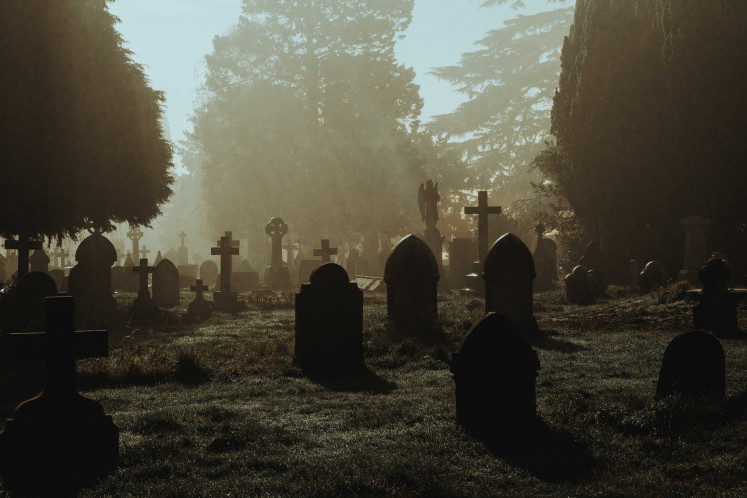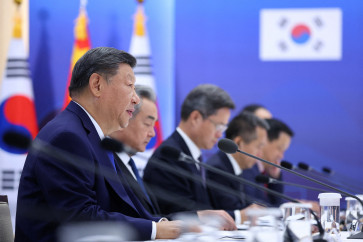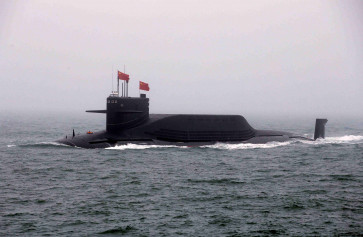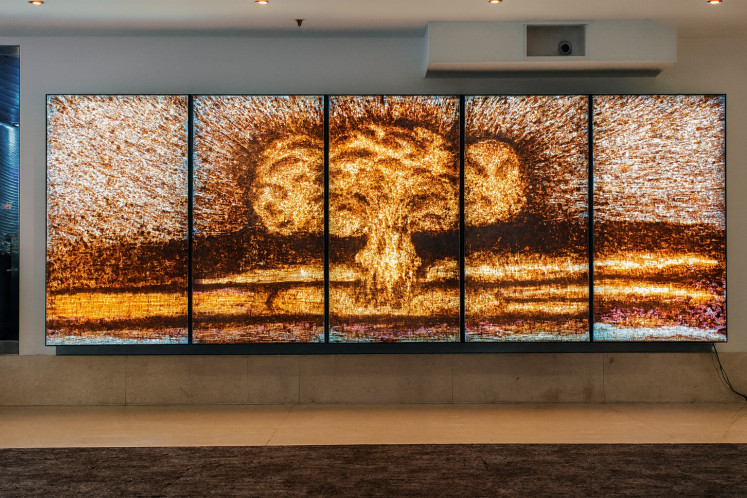Popular Reads
Top Results
Can't find what you're looking for?
View all search resultsPopular Reads
Top Results
Can't find what you're looking for?
View all search resultsRevisiting photographers' bible 'The Decisive Moment'
Change text size
Gift Premium Articles
to Anyone
H
enri Cartier-Bresson often jokingly referred to himself as Henry Carter to disguise his bourgeois origins. Later he famously declared: “Magazines end up wrapping French fries, while books remain.”
The legendary photographer (1908-2004) wanted to publish a book of his photographs circa 1951. In October 1952, a French publisher of art books, Teriade, crystalized the making of the momentous classic in the simultaneous American and French publications of The Decisive Moment and Images à la Sauvette.
The 17th-century cleric and memoirist Cardinal de Retz wrote in 1717: “There is nothing in this world that does not have a decisive moment and the masterpiece of good ruling is to know and seize this moment.”
This obviously struck a chord for the highly literate photographer.
Nowadays the idea of the decisive moment is inevitably associated with a certain kind of photography. “The eye of the century,” as Pierre Assouline named Cartier-Bresson in his biography (1999), used The Decisive Moment as the title of the American edition (Simon and Schuster), while the French edition was called Images à la Sauvette (Images on the Run). Both original editions share the same striking cover of a Henri Matisse collage and are now worth at least US$4,000.
Read also: Goenawan Mohamad's great visual adventure
Robert Capa, cofounder of Magnum photo agency in 1947 with Cartier-Bresson and David Seymour, declared it to be “a bible for photographers.” The innovative design of the 1952 publication format, together with the impact of the 24 x 36 image sequences spread across the pages, were strengthened by heliogravure printing by the best craftsmen, the French Draeger brothers. There were 126 images in all.
Cartier-Bresson explained repeatedly: “While our prints are beautiful and perfectly composed (as they should be), they are not photographs for living rooms.” He insisted that in the end, the final image is that printed in books.
Cartier-Bresson wanted the printed book to be for artists. Despite his fame as a photojournalist, Cartier-Bresson still aspired to be known as an artist, but always within a perfectly framed and strictly geometric format.
He had a painterly eye in his youth, graduating to surrealistic images taken by a magically light Leica camera, perfectly suited to his way of capturing images. Later Leica cameras permitted him to follow political events unobtrusively with speed, while he waited for the perfect moments.
Read also: A return to visual beauty
The exhibition presents a selection of vintage prints plus archival material to explain the genesis of the original edition, while its facsimile reprint by Steidl Verlag (2014) is now available for €98. The Steidl edition is accompanied by an additional booklet with an essay by Clement Cheroux, now senior curator at San Francisco Museum of Modern Art.
As Cheroux points out, pre-Magnum Cartier-Bresson was obsessed with form, creating his signature style. After the founding of Magnum and post WWII, he was driven to make images that mattered more in terms of their social and political content, rather than aesthetic impact.
Nowadays, photographers tend to move from photojournalism into art or advertising, because that is where more money is earned. Cartier-Bresson did the opposite in 1952 when he moved back into the art market.
Sean O’Hagen in his critique of the reprint of The Decisive Moment by Steidl in The Guardian on Dec. 23, 2014, stated: “It’s the book that changed photography forever. But why republish The Decisive Moment after 62 years, when it cements such out-of-date ideas?” Simply because the book represents an essential part of photographic history.
The book, in both languages, is divided into two chronological and geographical sections. The first spans 1932 to 1947 with photographs taken in the West. The second, from 1947 to 1952, contains images shot mostly in the East where Cartier-Bresson followed struggles for independence in countries like India, China and Indonesia.
Often accompanied by his first Indonesian wife, Ratna Mohini, otherwise known as Eli, he captured images of Bung Karno, Bung Hatta, freedom fighters, many other politicians and ordinary Indonesian or Dutch citizens.
What The Decisive Moment did above all was to enshrine the term in the collective photographic consciousness, shaping several ensuing generations of photographers. What the photographer understood by The Decisive Moment is best explained by the famous quote from his lengthy introduction to the book, harking back to Cardinal de Retz: “Photography is the simultaneous recognition, in a fraction of a second, of the significance of an event as well as of a precise organization of forms which give that event its proper expression.”
Photography has certainly changed in our contemporary times but the yardstick of photography in the public eye remains black and white. O’Hagen described Cartier-Bresson’s photography as: “Acutely observational, meticulously composed, charming, as if color and conceptualism had never happened. In short, classical photography of a high standard, but then the younger generation are out to change these standards and replace them by digital photography.”
However, the younger generation will have to submit to this exacting standard and not deviate from observation, perhaps to convey the message more emotionally and expressively. Every photographer can learn from the exacting standards of quality, printing and presenting images to an audience, without having to explain the poetry or wrenching emotion of that moment to the observer.
There are plans for the exhibition to travel to New York and then perhaps Switzerland, but dates are not yet confirmed. (kes)
Exhibition: Henri Cartier-Bresson: Images à la Sauvette
Place: Fondation Henri Cartier-Bresson at 2, Impasse Lebouis, Paris, 75014, France
Date: Jan. 11 to April 23, 2017
---------------
Interested to write for thejakartapost.com? We are looking for information and opinions from experts in a variety of fields or others with appropriate writing skills. The content must be original on the following topics: lifestyle ( beauty, fashion, food ), entertainment, science & technology, health, parenting, social media, travel, and sports. Send your piece to community@jakpost.com. For more information click here.











